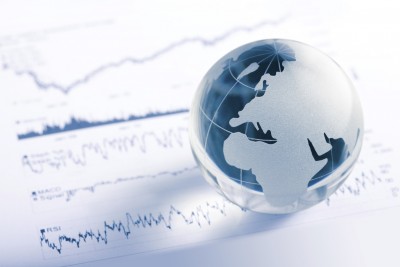The latest developments in the local and global economies
Written and accurate as at: Sep 14, 2017 Current Stats & Facts

Australia
There were several positive data points that came out during the month. Retail trade data was stronger than expected despite lacklustre wage growth, rising 0.3%, above expectations of 0.2% increase. Similarly, building approvals rose more than expected, due mainly to a 20% gain in apartment approvals. NAB’s business confidence survey continued its positive trend from last year rising to 12pts from 9pts in July. Wages data showed a 0.5% gain in Q2, in line with expectations and with weak wage growth remaining a headwind in the RBA’s eyes and for consumer spending. The unemployment rate remained unchanged at 5.6% after a robust July employment report (+28k). There were no surprises from the RBA’s Board meeting or the Statement on Monetary Policy, as their view hasn’t shifted much from May, with the exception that they mentioned they would prefer a weaker Aussie dollar.
United States
There was some positive macro-economic data for the US in August as we saw an upward revision to Q2 US GDP to 3.0% (annualised). This was partly due to improved personal consumption results which have also been reflected in consumer confidence surveys. The University of Michigan’s consumer sentiment index rose from 93.4 in July to 97.6 in August. Similarly, the Conference Board consumer confidence Index rose to 122.9 in August. However, some of the forward-looking indicators were mixed as the US ISM Manufacturing Index eased back to 56.3 in July from 57.8 in June (although the August result released in early September showed a rebound). Of some concern for the US Fed was that US inflation remains stubbornly low, with Core PCE (the Fed’s preferred inflation measure) coming in at 1.4% in July. Adding to the near-term concerns for the US is the impact that Hurricane Harvey and Irma will have on the economy, with Hurricane Harvey leading to a 25% rise in gasoline prices in the US due to supply disruptions.
Europe
Focusing on Europe we saw a continuation of robust economic data as Eurozone GDP came in at 0.6% in Q2, vs 0.5% in Q1, and Europe’s flash PMI rose to 55.8 from 55.7 in July. Similarly, the European Commission’s economic sentiment indicator supported this growth as it hit 111.9, its highest level since July 2007, pre-GFC. Given the strengthening data, markets are looking to the ECB’s September policy meeting for guidance surrounding the future path of interest rates, whether tapering of its QE policies will occur or any potential changes in monetary policy more broadly. Looking at the UK it was a slightly different story as the Bank of England supported dovish sentiment by keeping rates on hold in its Monetary Policy Committee meeting, as well as revising UK growth forecasts lower in the quarterly inflation report for August.
China
Partial indicators for July weakened slightly from the previous month and were lower than expected, although there is little to suggest a significant change in trend. Retail sales increased by 10.4% year-on-year compared to the 11% growth rate in June, while industrial production was 6.4% higher than a year earlier, compared to the 7.6% pace in June. In the survey data, the manufacturing purchasing managers index (PMI) increased to 51.7 in August from 51.4 while the non-manufacturing index declined to 53.4 from 54.5 a month earlier.
Japan
The main economic news for Japan was the release of its Q2 GDP data showing annualised 4% growth, much stronger than expectations of 2.5% rise. This was the sixth consecutive quarter of GDP growth, which is the first time in over a decade this has happened, and with the Q2 annualised GDP growth being stronger than any other developed country except Canada.










